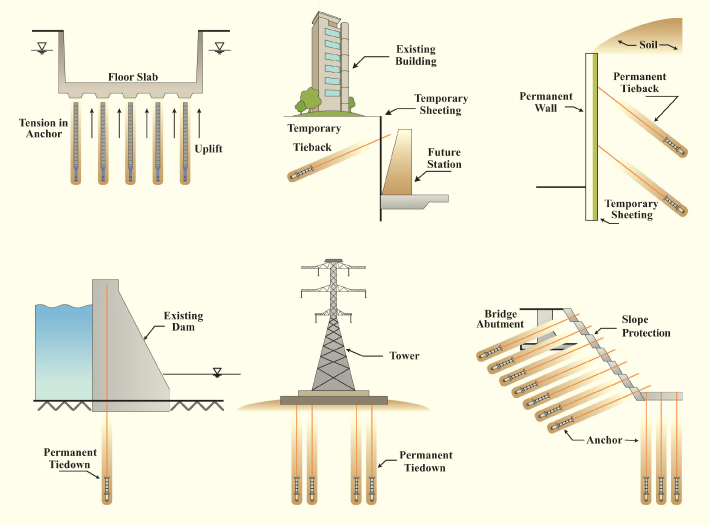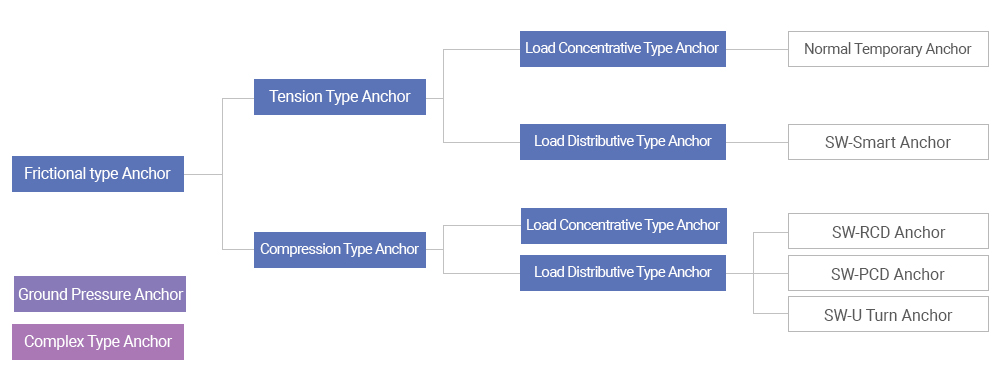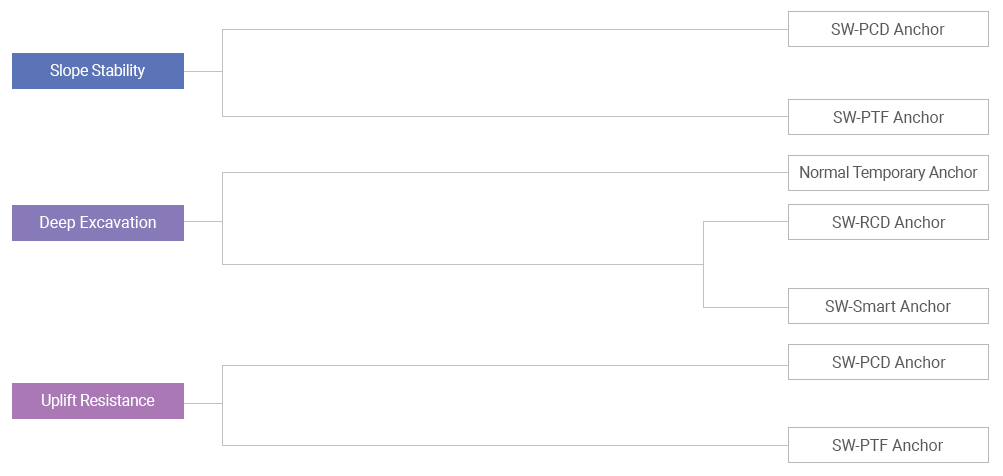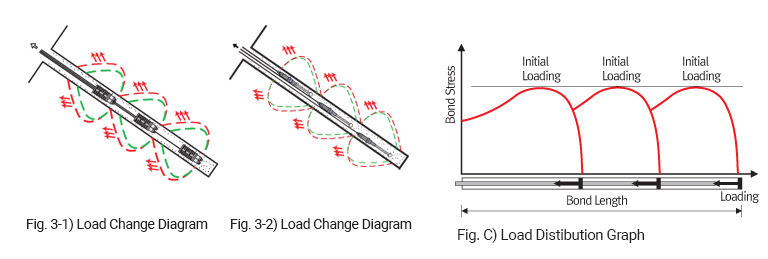Products
- Temporary anchor
Contact Us
Information
고객센터
맴버쉽
Product Questions
Anchor Story
A ground anchor is a tension element used to apply a restraining force to a structure by anchoring the distal end of the anchor in the ground. Ground anchors have been used worldwide for over fifty years to restrain structures in intimate contact with the ground surface to provide stability to these structures and control deformations caused by active ground pressures.

- Support of excavation for deep basement construction
- Highway retaining walls
- Grade separation retaining walls
- Rehabilitation of failing retaining walls
- Slope stability and landslide control
- Tiedown anchors to resist buoyancy forces
- Bridge abutment walls
- Tunnel portal walls
- Provide resistance to earthquake loading
- Resistance to overturning moments for towers and dams
- Anchorages for suspension bridges

Ground anchors are classified according to their service life, purpose, installation procedures and method of load transfer from the anchor to the ground. The most common classification is as shown in the table below. Based on the service life, any prestressed anchor for temporary use, generally defined as having a service life less than 24 months is considered temporary anchor and having at least a 24 month service life is considered permanent anchor. Also, anchors can be classified into frictional type anchors that are supported by the friction of the grout and the ground, ground pressure type anchors that acquire anchoring force with the passive resistance of the ground using ground pressure boards, and complex type anchors that are a combination of the above two types. Frictional type anchors can also be classified into tension type anchors and compression type anchors based on the method of load transfer to the grout. In addition, tension type and compression type anchors can be classified into load concentrative type anchors and load distributive type anchors depending on the distribution of the load.
| Classification by Service Life |
|---|
 |
| Classification by Method of Load Transfer |
|---|
 |
| Classification by Purpose of Use |
|---|
 |
- Load Concentrative Tension Type Anchor
- When stress is applied to tension type anchor, load transfer occurs to bond length through adhesion of steel strand and grout. Due to load concentration, the parts of tension type anchor attached with steel strand and grout become unzipped and this leads to crack and load reduction. In addition, tension type anchor has the weakness of progressive debonding and time-dependent load reduction (creep) occurrence when friction of load concentration zone exceeds the extreme skin friction of the target ground. As shown by (Fig. A), tension at the earlier phase displays the state as of ①. Then, as the parts attached with steel strand and grout become unzipped, it changes into the state as of ②. The relatively concentrated skin friction of anchor becomes higher than the allowed value between ground and grout body to progress into the state as of ③. Accordingly, load reduction takes place

- Load Concentrative Compression Type Anchor
- Compression type anchors consist of an unbonded polyethylene (PE)-coated steel strand which transfers the jacking force/load directly to a structural element located at the distal end of the anchor. Unlike the tension type anchors, the grout body for compression type anchors is loaded in compression which is capable of securing much higher loads. However, due to the concentrative design of these anchors, the use of high-strength grout is frequently required to secure the jacking forces at the distal end.Also, it is often difficult to secure concentrative anchorage force in weak soils. Similar to the tension type anchors, compression type anchors are subject to the occurrence of progressive debonding and time-dependent load reduction (creep) as displayed in state as shown in (Fig. B). In this case the friction required to secure the concentrated load exceeds that of the skin friction for that zone. This effect causes grout debonding and loss of soil confinement pressure resulting in load reduction as displayed in states ② and ③

- Load Distributive Tension / Compression Type Anchor
- As discussed, high stresses from tension and conventional compression type anchors transfer concentrated loads to the soil and grout body which can become overstressed resulting in failure. Therefore, load distributive compression type anchors have been developed and are being used, which uniformly distribute the anchor load to the grout body and soil along the theoretical length of the bond zone. In addition the grout strength requirements are reduced as well as applied eccentricity. As a result high loads can be achieved even in normal soil condition. Recently, load distributive tension type anchors have been developed which are capable of securing stable loads in even relatively weak soils such as clay and silts. These anchors do not require highstrength grout and have low eccentricity as well. The use of load distributive anchors results in a more uniform distribution of the anchor force to the soil as illustrated in figure C below. Therefore, load reduction and creep are minimized, enabling the anchor to maintain initial design load.

